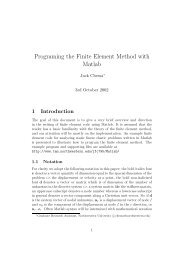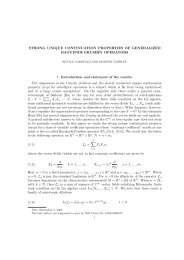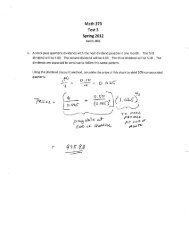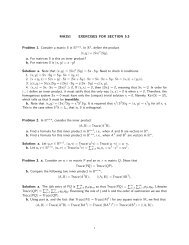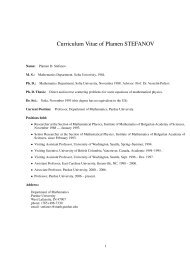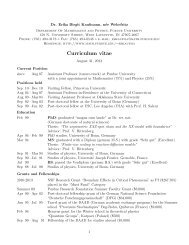The Solar Chimney
The Solar Chimney
The Solar Chimney
Create successful ePaper yourself
Turn your PDF publications into a flip-book with our unique Google optimized e-Paper software.
<strong>The</strong> <strong>Solar</strong> <strong>Chimney</strong> Schlaich Bergermann<br />
und Partner<br />
3.5. A 'hydroelectric power station for the desert '<br />
<strong>Solar</strong> chimneys are technically very similar to hydroelectric power stations - so far the<br />
only really successful large scale renewable energy source: the collector roof is the<br />
equivalent of the reservoir, and the chimney of the penstock. Both power generation<br />
systems work with pressure-staged turbines, and both achieve low power production<br />
costs because of their extremely long life-span and low running costs. <strong>The</strong> collector roof<br />
and reservoir areas required are also comparable in size for the same electrical output.<br />
But the collector roof can be built in arid deserts and removed without any difficulty,<br />
whereas useful (often even populated) land is submerged under reservoirs.<br />
<strong>Solar</strong> chimneys work on dry air and can be operated without the corrosion and cavitation<br />
typically caused by water. <strong>The</strong>y will soon be just as successful as hydroelectric power<br />
stations.<br />
Electricity yielded by a solar chimney is in proportion to the intensity of global solar radiation,<br />
collector area and chimney height.<br />
Optimum dimensions can be calculated only by including specific component costs (collector,<br />
chimney, turbines) for individual sites. And so plants of different sizes are built<br />
from site to site - but always at optimum cost: if glass is cheap and concrete expensive<br />
then the collector will be large with a high proportion of double glazing and a relatively<br />
low chimney, and if glass is expensive there will be a smaller, largely single-glazed collector<br />
and a tall chimney.<br />
4. <strong>The</strong> prototype in Manzanares<br />
Detailed theoretical preliminary research and a wide range of wind tunnel experiments<br />
led to the establishment of an experimental plant with a peak output of 50 kW on a site<br />
made available by the Spanish utility Union Electrica Fenosa in Manzanares (about 150<br />
km south of Madrid) in 1981/82, with funds provided by the German Ministry of Research<br />
and Technology (BMFT).<br />
<strong>The</strong> aim of this research project was to verify, through field measurements, the performance<br />
projected from calculations based on theory, and to examine the influence of individual<br />
components on the plant's output and efficiency under realistic engineering and<br />
meteorological conditions.<br />
To this end a chimney 195 m high and 10 m in diameter was built, surrounded by a collector<br />
240 m in diameter. <strong>The</strong> plant was equipped with extensive measurement data<br />
acquisition facilities. <strong>The</strong> performance of the plant was registered second by second by<br />
180 sensors.<br />
Since the type of collector roof primarily determines a solar chimney's performance<br />
costs, different building methods and materials for the collector roof were also to be<br />
tested in Manzanares. A realistic collector roof for large-scale plants has to be built 2 to 6<br />
metres above ground level. For this reason the lowest realistic height for a collector roof<br />
for large-scale technical use, 2 metres, was selected for the small Manzanares plant.<br />
(For output, a roof height of 50 cm only would in fact have been ideal.) Thus only 50 kW<br />
could be achieved in Manzanares, but this realistic roof height also permitted convenient<br />
access to the turbine at the base of the chimney. This also meant that experimental<br />
planting could be carried out under the roof to investigate additional use of the collector<br />
as a greenhouse.<br />
Structural Consulting<br />
Engineers<br />
.<br />
Last update 2002 Page 8





